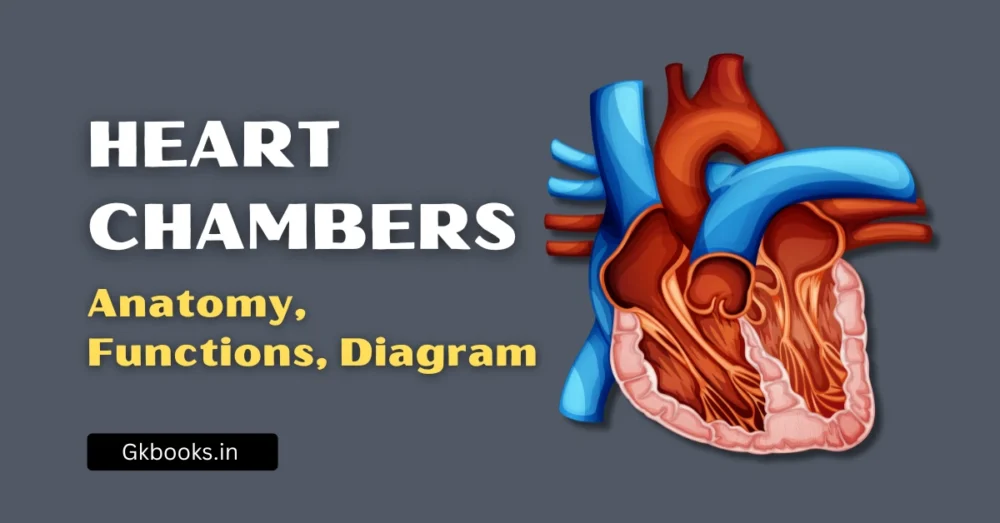The human rib cage is a bony framework in the thoracic region made of 12 pairs of ribs, the sternum, and thoracic vertebrae. It protects vital organs like the heart and lungs, supports breathing, and maintains the shape of the chest.
Overview of the Human Rib Cage
- Location: Thoracic cavity (chest region)
- Main Components:
- Ribs – 12 pairs
- Sternum – Breastbone
- Thoracic Vertebrae – 12 vertebrae in the spine
- Shape: Conical, narrower at the top, wider at the bottom
- Function: Protection, respiration, structural support
Structure of the Human Rib Cage
| Component | Description | Exam Tip |
|---|---|---|
| Ribs | 12 pairs of curved bones are attached to the thoracic vertebrae | Remember: “12 months = 12 pairs” |
| Sternum | Flat bone at the front center of the chest | Important for the Center of the chest location |
| Thoracic Vertebrae | 12 bones form the back support of the rib cage | Found in the middle section of the spine |
◾Also explore complete details of the Human Skeletal System
To stay updated with the latest GK and Current Affairs infographics, follow our official Instagram and Facebook page and prepare for exams easily.
Types of Ribs
| Type of Ribs | Pairs | Attachment | Mnemonic |
|---|---|---|---|
| True Ribs | 1–7 | Directly attached to the sternum via the costal cartilage | T for “Top 7” |
| False Ribs | 8–10 | Indirectly attached to the sternum via the cartilage of rib 7 | “False = Fewer direct links” |
| Floating Ribs | 11–12 | No attachment to sternum, only to vertebrae | “Floating = Free ends” |
Functions of the Rib Cage
- Protection – Shields the heart, lungs, and major blood vessels
- Respiration – Expands and contracts during breathing
- Support – Maintains chest shape and anchors muscles
- Attachment – Provides points for muscles of the chest, back, and upper abdomen
Exam-Oriented Key Facts
- Total ribs: 24 (12 pairs)
- True ribs: 7 pairs
- False ribs: 3 pairs (8th–10th)
- Floating ribs: 2 pairs (11th–12th)
- Sternum parts: Manubrium, body, xiphoid process
- Joint type: Costovertebral joints (between ribs and vertebrae)
- Special fact: Floating ribs protect the kidneys partially
Common Questions in Competitive Exams
- Q: How many pairs of ribs are in the human body?
A: 12 pairs (24 ribs total) - Q: Which ribs are called floating ribs?
A: 11th and 12th pairs - Q: Which bone is called the breastbone?
A: Sternum
FAQs
Q1: What is the function of the rib cage in respiration?
A: The rib cage expands and contracts with the help of intercostal muscles, allowing the lungs to fill and empty during breathing.
Q2: Which ribs are most likely to fracture?
A: Middle ribs (4th–9th) are most prone to fractures due to their exposure.
Q3: Why are floating ribs important?
A: They protect the kidneys and allow flexibility in the lower thorax.
Q4: How to remember the number of ribs for exams?
A: Link it to the months of the year – 12 months = 12 pairs.
Quick Revision Table for Exams
| Feature | Number | Example Question |
|---|---|---|
| Total ribs | 12 pairs | “How many pairs of ribs are in humans?” |
| True ribs | 7 pairs | “Which ribs attach directly to the sternum?” |
| False ribs | 3 pairs | “Which ribs attach indirectly to the sternum?” |
| Floating ribs | 2 pairs | “Which ribs have no sternal attachment?” |
Final Exam Tip
In SSC, RRB NTPC, and State-level exams, rib cage questions often appear in Biology (Human Anatomy) sections. Focus on:
- Numbers & classification
- Functions
- Special facts (floating ribs, sternum parts)
Motivation Note:
Think of the rib cage as your body’s “armor” — just like it protects your organs, your preparation protects your score. Keep revising in small, focused bursts for maximum retention.
More Related Posts:
Heart Chambers: Anatomy, Functions, Diagram & Exam-Focused Notes
Vitamin Deficiency Diseases – Causes, Symptoms, Sources & Exam-Focused Notes
Function of the Stomach in the Human Body: Key Roles, Mechanisms & Importance






